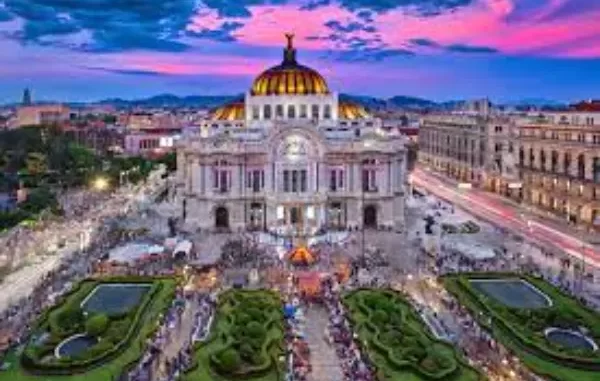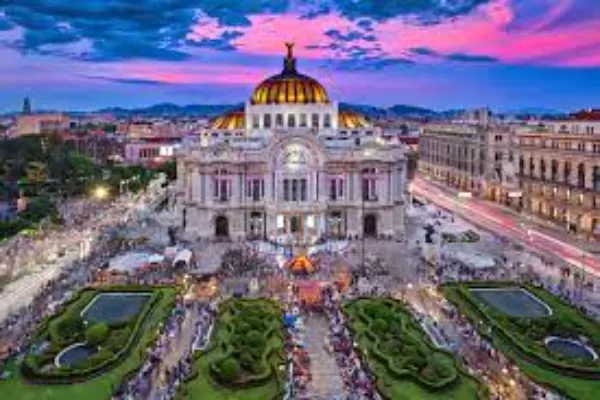
Mexico is a vibrant and fascinating country with a rich culture and history. It is home to some of the world’s most spectacular archaeological sites, diverse landscapes, and unique cuisine. From the mind-boggling ruins of the ancient Mayans to the iconic mariachi bands, Mexico is a country full of fascinating facts and stories.
In this article, we’ll explore some of the most interesting facts about Mexico. From its rich cultural heritage to its vibrant art scene, you’ll learn something new and exciting about this amazing country. So, grab a taco and let’s dive into the wonderful world of Mexico!
Uncovering the Fascinating History of Mexico
Mexico is a nation that has a fascinating and rich history. Throughout its long and turbulent past, it has seen numerous empires, dynasties, and powerful leaders. It has also been part of several major world events, including the Spanish conquest of the Aztecs and the Mexican-American War. This brief article will explore some of the most important aspects of Mexican history.
The earliest evidence of human habitation in Mexico dates back to around 13,000 BC. During this time, various indigenous tribes inhabited the region. The earliest known civilization is the Olmecs, who lived in the southern region of Mexico between 1400 and 400 BC. The Olmecs were highly advanced and had a complex writing system, art, and highly developed religion.
The Aztecs were the next major civilization in Mexico. They arrived in the region in the 13th century and quickly rose to become one of the most powerful and influential empires in the Americas. They had an impressive and highly developed culture that included art, writing, architecture, and religion. Eventually, they were conquered by the Spanish in 1521.
The Spanish were the first Europeans to colonize Mexico in the 16th century. From then on, Mexico was under Spanish control until 1821, when it gained its independence. During this period, the country experienced a great deal of political and social upheaval. In addition, it was the site of the Mexican-American War (1846-1848), which saw the US gain control of large parts of Mexico.
After gaining its independence, Mexico experienced several periods of political unrest and economic instability. In the early 20th century, Mexico underwent a period of reform and modernization. This included the establishment of a new constitution and the adoption of a democratic form of government.Today, Mexico is a vibrant nation with a rich culture and history. It is home to numerous ancient sites, including the ruins of the Aztec and Mayan civilizations. It is also a major tourist destination, attracting millions of visitors each year. With its fascinating past and modern-day attractions, Mexico is a country with something for everyone.
Exploring Mexico’s Rich Culture and Traditions
Mexico is a country steeped in rich culture and traditions. Spanning from the pre-Colombian era to the present, the country is filled with vibrant customs and rituals that have been passed down through generations. From its music and art to its cuisine and festivals, Mexico is an incredibly diverse place that celebrates its unique heritage.
One of the oldest traditions in Mexico is the celebration of Dia de los Muertos, or Day of the Dead, which dates back to the pre-Colombian era. This is a particular festive time when families honor their deceased loved ones by adorning their graves with marigolds, candles, and other mementos. The festival also includes parades, dancing, and traditional dishes.

Music is an integral part of Mexican culture, with traditional genres including mariachi, norteño, and tejano. These styles are often combined with modern hip-hop and electronic music to create a unique sound. Many of the country’s most famous musicians draw on traditional Mexican music to create their own unique styles.
The visual arts are also an important part of the Mexican culture. Iconic works such as Diego Rivera’s murals can be found in many of the country’s large cities. Additionally, the festival of Cinco de Mayo celebrates the country’s battle for independence from Spain, with many people wearing traditional clothing and marching in parades.
The food in Mexico is equally diverse, with dishes such as tacos, enchiladas, and tamales representing some of the most beloved and iconic dishes. Mole sauce is also popular, with regional variations including ingredients such as chocolate, peanuts, and spices. Street food is also popular, with vendors selling everything from tacos to churros.
Mexico is a country with a long and vibrant history that is celebrated in many different ways. From its music to its cuisine, Mexico is a place that will transport you back in time and provide a unique and unforgettable experience.
Surprising Facts About Mexico’s Geography and Landscape
Mexico is a country full of astonishing geographic and landscape features. Located in the southern part of North America, Mexico is home to mountains, deserts, tropical rainforests, and several bodies of water. Here are some surprising facts about Mexico’s geography and landscape.
First, Mexico has the highest peak in North America. The Pico de Orizaba, also known as Citlaltépetl, is 18,491 feet tall and is located on the border of the Mexican states of Puebla and Veracruz. This majestic mountain is part of the Trans-Mexican Volcanic Belt, which is home to several other volcanoes.
Second, Mexico is home to the world’s longest underwater cave system. Known as Sistema Sac Actun, this incredible cave system is located in the Yucatán Peninsula and is 215 miles long. It consists of several interconnected caves and is home to a variety of unique species.
Third, Mexico has the lowest point in North America. This title belongs to Laguna Salada, which is located in Baja California and is 282 feet below sea level. This lake is a popular destination for bird watching, as it is home to over 300 species of birds.
Fourth, Mexico is home to the longest coastline in the Americas. With a total length of 9,330 miles, Mexico’s coastline stretches from the Gulf of Mexico in the east to the Pacific Ocean in the west. It is also home to some of the best beaches in the world, such as Cancún and Acapulco.
Finally, Mexico has the world’s second-largest desert. At over 120,000 square miles, the Sonoran Desert is the second-largest desert in the world and is located in northern Mexico and parts of the states of Arizona and California in the United States. It is home to a variety of unique species, such as the saguaro cactus.
These facts about Mexico’s geography and landscape are just a few of the reasons why this country is so unique. From its impressive mountains to its stunning beaches, Mexico is full of wonderful natural wonders.

Leave a Reply